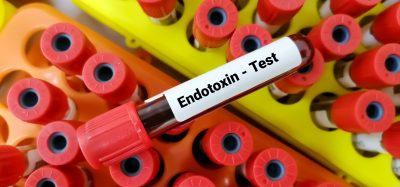Abbott receives FDA clearance for new test to detect Vitamin D levels
Posted: 30 November 2011 | European Pharmaceutical Review | No comments yet
Abbott announced today it has received clearance from the U.S. Food and Drug Administration for a fully-automated 25-OH Vitamin D assay performed on its widely used ARCHITECT® laboratory testing platform.
Published data from the Third National Health and Nutrition Survey, reported in the Archives of Internal Medicine, show that less than a quarter of Americans have the minimal vitamin D levels necessary for general health benefits. There are a number of factors that may contribute to people having low vitamin D, including low dietary intake, sun avoidance, geographic location, age and ethnicity.
Low vitamin D can cause skeletal disorders, such as rickets in children and bone loss in adults, and has been linked to an increased risk of hip fractures. Although research is still being conducted in this area, some studies have shown that people with a low level of vitamin D may have elevated risk for cardiovascular problems, autoimmune disorders and some infectious diseases.
“As health care professionals and patients become aware of the potential health risks associated with low vitamin D, labs have seen a surge in test orders,” said Brian Blaser, senior vice president, Diagnostics, Abbott. “The new ARCHITECT 25-OH Vitamin D assay has shown excellent precision and offers a fully-automated solution that may help laboratories cope with escalating demand for vitamin D testing and help get results to physicians and their patients much sooner.”
With a simple blood test, the ARCHITECT 25-OH Vitamin D assay can measure the stable form of vitamin D, 25-hydroxyvitamin D (25-OH vitamin D), the body’s repository of vitamin D. In the kidneys, 25-OH vitamin D converts into the active form of the vitamin that helps regulate calcium and phosphate levels. 25-OH vitamin D is established as the appropriate measurable indicator of vitamin D status because it is stable and easily measured.
“Regular vitamin D testing can be important for people who may have risk factors that could contribute to vitamin D deficiencies,” said Beth Schodin, Ph.D, scientific affairs manager, Diagnostics, Abbott. “The availability of a highly accurate and reliable vitamin D assay can give physicians timely information about their patients and help them identify appropriate treatment options.”
Intended Use and Important Safety Information:
For In Vitro Diagnostic Use
INTENDED USE: The ARCHITECT 25-OH Vitamin D assay is a chemiluminescent microparticle immunoassay (CMIA) for the quantitative determination of 25-hydroxyvitamin D (25-OH vitamin D) in human serum and plasma. The ARCHITECT 25-OH Vitamin D assay is to be used as an aid in the assessment of vitamin D sufficiency.
IMPORTANT SAFETY INFORMATION: For diagnostic purposes, results should be used in conjunction with other data; e.g., symptoms, results of other tests, clinical impressions, etc. It is recommended that each laboratory establish its own reference range, which may be unique to the population it serves depending upon geographical, season, patient, dietary, or environmental factors. This product contains human sourced and/or potentially infectious components. It is recommended that these reagents and human specimens be handled in accordance with the OSHA Standard on Bloodborne Pathogens. This material contains sodium azide; material and its container must be disposed of in a safe way.
CAUTION: United States Federal law restricts this device to sale and distribution by or on the order of a physician, or to a clinical laboratory.
For complete information, see the assay specific package insert on www.abbottdiagnostics.com.
About the ARCHITECT Instrument Family
The ARCHITECT family of analyzers includes the i1000 SR and i2000 SR for immunoassay testing, the c4000, c8000, and c16000 for clinical chemistry testing, and the ci4100, ci8200, and ci16200 integrated immunoassay/chemistry systems. Abbott’s unique technologies include the Robotic Sample Handler to prioritize emergency tests; sample clot and bubble detection to verify sampling integrity; and FlexRate and CHEMIFLEX assay technologies. ARCHITECT systems use identical easy-to-use software and common reagents across all members of the family.





